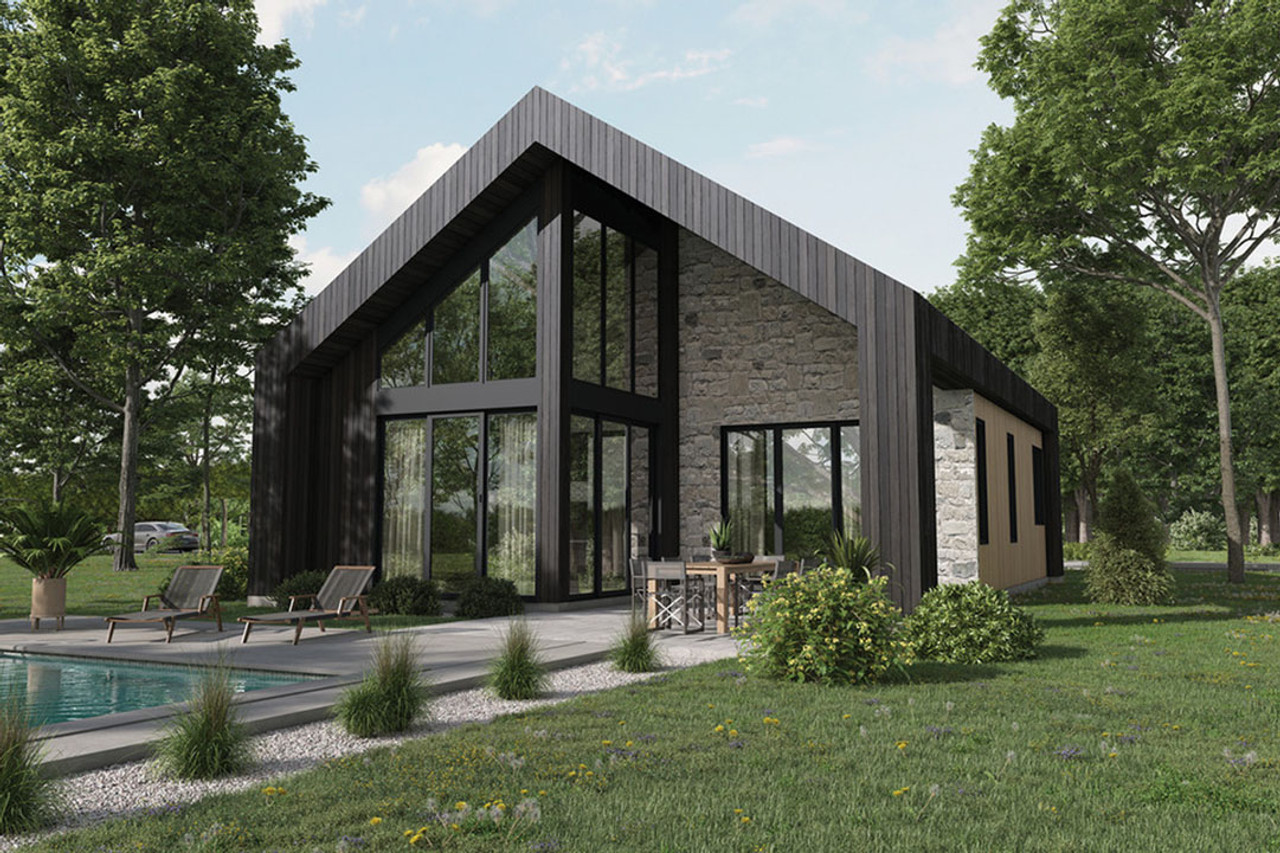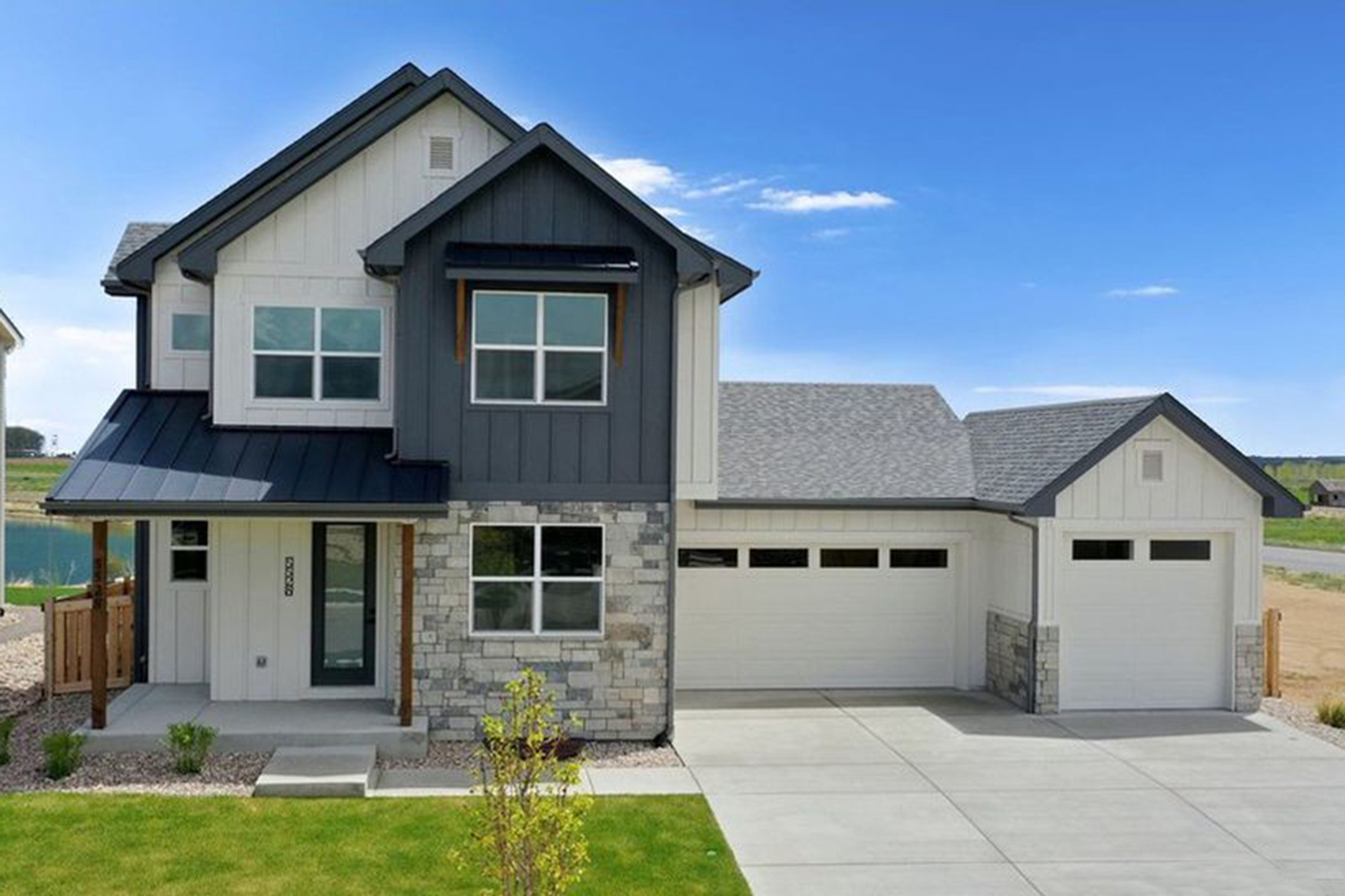When selecting between modern and traditional house plans, your decision should reflect both your personal taste and the functional needs of your household. As home design trends evolve in 2025, modern homes continue to lead with open layouts, smart technology, and eco-conscious features. Meanwhile, traditional homes remain timeless, offering comfort, structure, and architectural charm. By understanding the latest design trends and key differences between these two popular styles, you’ll be better equipped to choose a home plan that supports your lifestyle and vision.
Understanding the Difference: Traditional vs. Modern House Plans in 2025
What Is a Traditional House Plan?
Traditional house plans are grounded in classic architectural forms such as Colonial, Craftsman, and Cape Cod styles. These homes typically showcase gabled or hipped roofs, symmetrical window layouts, dormer windows, and covered front porches. Interiors are organized into distinct rooms with defined purposes—formal dining rooms, separate living areas, and cozy bedrooms.
In 2025, traditional design continues to thrive by incorporating updated touches like energy-efficient materials, farmhouse-inspired finishes, and enhanced outdoor spaces. Rich textures, natural wood beams, brick accents, and layered lighting schemes give traditional homes their enduring warmth and curb appeal.
Key features of traditional homes:
- Defined, single-purpose rooms
- Dormers, shutters, and decorative trim
- Warm interiors with classic materials like wood and stone
- Wraparound or front porches for outdoor living
- Aesthetic continuity with historical styles
What Is a Modern House Plan?
Modern house plans prioritize functionality, flexibility, and clean, minimalist aesthetics. Hallmarks of modern architecture include flat or shed-style roofs, large expanses of glass, open-concept floor plans, and a neutral color palette. In 2025, modern homes emphasize biophilic design, integrating nature with interiors through indoor plants, green walls, and panoramic views.
Energy efficiency and smart home integration are also top priorities. Think solar panels, passive heating and cooling, EV charging stations, and automation systems for lighting, security, and climate control.
Key features of modern homes:
- Open floor plans with few interior walls
- Floor-to-ceiling windows and skylights
- Smart home technology integration
- Natural materials like concrete, steel, and reclaimed wood
- Sleek kitchens with hidden storage and high-end appliances
2025 Trends That Define Modern and Traditional Architecture
Top Modern Home Design Trends
- Multifunctional Spaces: With more people working remotely, home office nooks, flex rooms, and convertible guest areas are essential.
- Sustainable Materials: Homeowners are prioritizing net-zero energy homes, passive solar design, and recycled or carbon-neutral materials.
- Smart Tech Integration: Voice-activated controls, security systems, and climate automation are now standard features.
- Indoor-Outdoor Living: Expansive glass doors that open to patios or rooftop decks blur the line between inside and out.
Top Traditional Home Design Trends
- Modern Farmhouse Revival: Blending rustic character with modern amenities, this continues to be a sought-after traditional style.
- Classic Floor Plans with a Twist: While layouts remain structured, many traditional homes now incorporate open kitchen-dining areas for added flow.
- Sustainable Updates: Traditional homes are now being built with eco-friendly insulation, high-efficiency HVAC, and energy-saving windows.
- Outdoor Focus: Porches, verandas, and sunrooms are designed as functional extensions of the indoor space, often with outdoor kitchens or fireplaces.
Comparing Space and Flow: Layouts in Traditional vs. Modern Homes
Modern house plans emphasize open-concept living, where kitchens, dining areas, and great rooms merge into one cohesive space. These layouts are ideal for entertaining or family gatherings and provide flexibility to reconfigure furniture and uses over time. Natural light, ventilation, and flow are key principles.
Traditional homes, on the other hand, provide structured spaces that appeal to homeowners seeking order, privacy, or separation for tasks like work, dining, or media viewing. These homes typically feature larger square footage to accommodate clearly defined rooms.
Modern space usage highlights:
- Fewer walls for a seamless flow
- Flexible layouts that evolve with your lifestyle
- Creative use of space for multiple functions
Traditional space usage highlights:
- Segmented rooms for structure and privacy
- Quiet zones ideal for remote work or study
- Strong emphasis on comfort and formality
Pros and Cons of Modern and Traditional House Plans
Benefits of Modern House Plans
Pros:
- Energy-efficient and environmentally friendly
- Ideal for open, social lifestyles
- Clean, clutter-free aesthetic
- Smart home ready and future-focused
Cons:
- May lack the coziness and visual warmth of traditional styles
- Less private due to open layouts
- Flat roofs may require more maintenance in certain climates
Benefits of Traditional House Plans
Pros:
- Timeless curb appeal and cozy interior charm
- Offers privacy with clearly defined rooms
- Ages gracefully across generations
- Inviting porches and detailed finishes
Cons:
- Less adaptable for changing family needs or home office use
- Fewer opportunities for natural light flow
- May use more square footage for similar functionality
Choosing the Best House Plan for Your Lifestyle in 2025
Whether you’re building your forever home or investing in a new chapter of life, choosing a design that aligns with your needs is crucial. Here’s how to decide between a modern vs. traditional home layout:
Consider Your Family's Needs
- Modern homes suit active families, creatives, or professionals who value flexibility, smart tech, and minimalism.
- Traditional homes work well for larger families, multigenerational living, or those who enjoy routine and structure.
Prioritize Natural Light and Sustainability
- Opt for modern home designs if sunlight, passive solar heating, or sustainable features are priorities.
- Choose a traditional design if charm, privacy, and established style are more important.
Balance Functionality and Personal Aesthetics
Your home should reflect your personality. Whether you lean toward the sleek lines of modern architecture or the historic elegance of traditional homes, select a plan that balances practical function with emotional connection.
Explore Curated House Plans with The House Plan Company
At The House Plan Company, we offer a curated selection of modern house plans, traditional house plans, and hybrid designs that reflect the latest 2025 trends in homebuilding. Our plans are thoughtfully created by leading residential designers to blend beauty, functionality, and innovation.
Whether you're drawn to a modern farmhouse, a minimalist modern retreat, or a classic Craftsman, our diverse collection includes styles to suit every taste and lifestyle. You’ll find:
- Open-concept layouts with indoor-outdoor living
- Smart home ready designs
- Energy-efficient and sustainable features
- Timeless exteriors with modern interiors
Let Us Help You Find Your Dream Home
Choosing the right house plan is the first step toward building a home that reflects who you are and how you live. At The House Plan Company, we make that journey easier by offering designs that are functional, beautiful, and aligned with your future.
Start exploring today, and find the perfect house plan for your modern or traditional dream home.
Contact The House Plan Company now to begin your home design journey.



